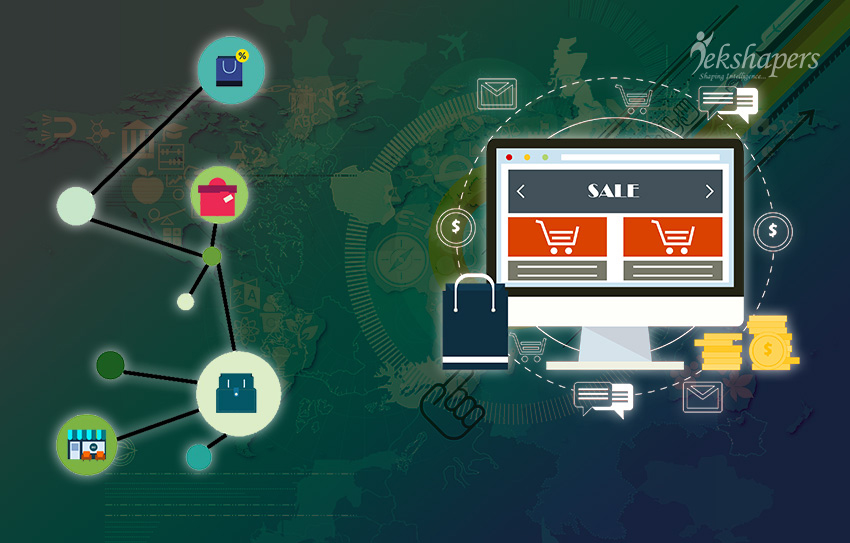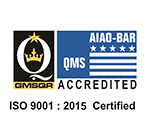Future of E commerce in Emerging Markets

E-commerce is the technology which is expected to become more popular in the future. While e-commerce is the maturing market, emerging economies are poised to become the next mega market as the adoption of internet rises gradually. Emerging markets are the hotbeds for e-commerce that comes with unique opportunities and challenges across the regions.
In emerging markets, the e-commerce has been growing exponentially, and at a rate may soon surpass the developed countries in 2018. As, e-commerce achieves higher penetration rates in developing countries, and it will overcome obstacles to adopt the high-speed networks which are fast enough for Smartphone and shipping cost.

Future of Ecommerce in Emerging Countries
These obstacles can only be overcome by better infrastructure and greater scale. As, the popularity of e-commerce grows in some of the major industry sectors like retail, manufacturing, online businesses, logistics and supply chains, etc. A larger share of the online population will be purchasing online goods by 2018 in many countries. Around 50% of the population in emerging markets will shop online by 2018, which is not far from the average penetration of 63% in developed countries.
The growth of E-commerce in Emerging Markets
The future potential growth for e-commerce across the developing world is quite strong enough. The total annual online retail sales across our markets (Brazil, China, India, Indonesia, Mexico, Russia, Saudi Arabia, South Africa and Turkey) could reach up to 3.5 trillion and has impacted the companies across multiple industry sectors like retail, finance, manufacturing, security, and technology. The main drivers behind this soaring demand for online shopping are the rapid increase in internet access as well as expanding incomes.
The emergence of e-commerce over past decade has radically transformed the economic landscape and has found the great amount of increase in the factors that led to the development of the internet. While developed countries who have been offering e-commerce have shown some impressive performance in their respective economies.
[Also Read: 7 BENEFITS OF ECOMMERCE TO ORGANIZATION]
Around 50% percent of people in emerging markets will shop online by 2018 which catch up quickly to the average of 63% in developed countries. For example in India, nearly 2/3 of the internet access is done on Smartphone whereas in China 3/5 is done. While, China and India are still dominating the e-commerce market outside the US, companies in Africa, Southeast Asia, and Latin America have helped in the makeable growth of their respective regions. The current scenario of online marketing in these countries is:-
China
China is the largest and most innovative retail e-commerce market all over the world. Online retailing in China is expected to grow from 17% in 2017 to 25% by 2020. Alibaba dominates the e-commerce sphere in China and in many parts of Asia which accounts for 1/10 of China’s total retail sales.
India
E-commerce has transformed the way business is done in India. Due to the increase in smartphones ad mobile phone, the online shopping has resulted to rise in India gradually. Flipkart and Snapdeal are the two most dominating online stores dealing in India. The value of e-commerce market is expected to cross $50 billion by the year 2018.
Africa
In Africa, some of the countries like Kenya, South Africa, Nigeria etc are experiencing information and communication technology revolution which is increasing the access to mobile banking. Over 60% of Africa has mobile phone coverage and over 10 times as landline phone in use. Alongside, a growing middle class in Africa, e-commerce growth is creating the foundation around each region.
Latin America
By 2019, 15.1 million people in Latin America are expected to buy goods and services through online which is a dramatic increase from 12.1 million in the years 2016. According to the survey, it is clear that the e-commerce market for Latin America is still smaller than Asia or other countries.
E-commerce Drivers in Emerging Markets
With the use of e-commerce, accelerating on the back of improved internet penetration in emerging markets, it is important to understand the specificities of customers and how they approach for online shopping. Unlike, in most advanced economies, both the choice and range of goods offered by web retailers in developing markets are limited.
To provide an expansive range of payments options is also the key factor which reaches to a wider audience, as most of the emerging nations are significantly under banked. Some of the e-commerce drivers in emerging markets state that:-
-
Choice and range enhanced by global shipping
There are many retailers in developing countries who have limited stock of goods. Due to which domestic e-commerce in some of the regions can, therefore, be limited in terms of international products. For ex- China has low-cost wealth for fashion and electronic products, but if we search for specific types of authentic brands such as Gucci handbags, etc can be difficult.
Nonetheless, the segment faces challenges and remains held on at the border controls during busy festive periods and the lengthy return time for damaged products.
-
Emerging consumers more active in social media shopping
Although, the use of Smartphone and mobile phones or laptops or desktops boosts up the internet penetration rates, emerging market consumers are well ahead of their counterparts by using the handset to shop. The importance of mobile phones is a necessity rather than a choice to shop.
Many emerging markets in Asia, Pacific, Africa, etc are mobile first enabled device accessed by consumers. Laptops or desktop are simply found in much fewer homes rather than developed countries.
-
A range of payments to server underbanked shoppers
Many emerging markets have a large number of underbanked populations. In Brazil, more than 15+ population held with no bank accounts. In order to reach a wider audience, online retailers should provide as many payment options as possible for their customers so that their customers do not face these disruptive issues.
Whereas, in countries like USA & UK payments are primarily be carried out online via bank card. China accepts stand-alone, mobile phone credit card and of course cash on delivery. The online retailer's primary goal must be to survive in cash driven environment which still dominates the most of emerging markets.
Challenges Faced by E-commerce in Emerging Markets
It is easy to connect with new customers by expanding into new international markets especially with the help of online channels. For e-commerce portal to achieve the growth in new markets, they must use local languages to communicate & connect with the customers. Indeed, nearly 60% of customers spend their time more on e-commerce websites.
But companies must also look at some of the challenges when viewing international expansion opportunities. Here are several key challenges that are faced by e-commerce in emerging markets:-
-
Technical infrastructure
To launch sites in international markets does not mean that those websites must be hosted by servers in those markets. Many times, it is not possible due to the local infrastructure limitations. Latency issues are usually common when robust solutions are used which smartly distribute the load of a server across large regions such as Europe.
-
Logistics status
Internet and e-commerce have ushered in the era of untold changes in culture, conversation, and consumption.According to the survey, a provider for international services for businesses, savvy companies that ship overseas, have increased their revenue up to 17%. Further, some of the international markets are famous for local corruption.
-
In-market customer support
Companies keen to expand their business in international markets, but they must not forget that customer support is the most vital aspect of their business. If your business provides customer support to your customers through email or phone call or live chat, etc it must deploy a localized version for the new consumers too.
-
Relevant Payment method
Most of the payment providers by market allow for simple adoption in CRM platform. You must look for the partner who can identify the proper payment methods for each market. Therefore, there must be proper arrangement for payment options for your business and customers too.
Recent Blog

Why Your Business Needs a Mobile App?
06-Dec-2022Related Blogs

Ecommerce Need of Todays Business World
11-May-2018
7 Benefits of Ecommerce to Organization
14-May-2018
Future of E commerce in Emerging Markets
01-Jun-2018














